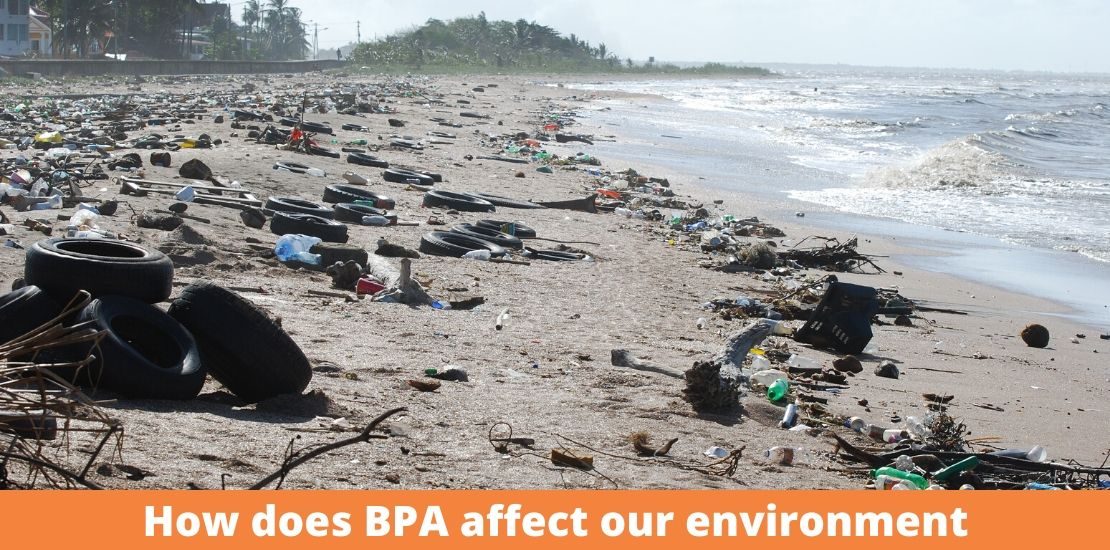- March 5, 2020
- Posted by: admin
- Category: Blogs

In previous issues we have gone through different topics related to Bisphenol A, from its description (https://www.hazoxinc.com/bisphenol-a-an-old-chemical-with-new-restrictions/), history (https://www.hazoxinc.com/bisphenol-a-almost-130-years-old-and-still-very-much-in-demand/) and main uses to the effects that this substance has on health (https://www.hazoxinc.com/bisphenol-a-and-how-it-affects-out-health/). In this article we will focus on the effects to the environment.
In 2010, the United States Environmental Protection Agency (EPA) reported that more than one million pounds of BPA are released into the environment annually (https://www.pediatricnursing.org/article/S0882-5963(09)00140-7/fulltext). BPA can enter the environment directly from the manufacturing of plastics, coatings and dyes industries. It can also enter the environment from the products containing BPA. Post-consumer BPA waste comes from the discharge of effluents from municipal wastewater treatment plants, from irrigation pipes used in agriculture, from plastic waste transported by the ocean, from the indirect leaching of plastic, paper and metal waste in landfills, and from companies that recycle paper or other materials (http://www.greenspec.co.uk/building-design/bisphenol-a-environment-human-health/).
A 2009 study evaluated statistical data on BPA exposures in North American and European aquatic environments (https://pubs.acs.org/doi/10.1021/es900598e#). The results suggest that there are few sites where the BPA concentrations are likely to cause adverse effects in aquatic ecosystems. There is a much higher risk in areas that are highly urbanized and industrial sites.
Despite the rapid soil and water half-life of 4.5 days (half-life is defined as the amount of BPA decreases by half every 4.5 days), and the air half-life of less than one day, the fact that BPA is present everywhere makes it a major pollutant (http://www.bisphenol-a.org/esafety/enassess.html). BPA has a low rate of evaporation from water and soil, which poses problems despite its biodegradability and low concern for bioaccumulation.
However, because it slowly decomposes in the environment when there is a lack of oxygen (https://web.archive.org/web/20110423211655/http:/www.chemicalsubstanceschimiques.gc.ca/fact-fait/bisphenol-a-eng.php) and is a widely used chemical, over time, this chemical could accumulate in aquatic systems and harm fish and other organisms.
BPA affects the growth, reproduction and development of aquatic organisms. Among freshwater organisms, fish appear to be the most sensitive species. Evidence of endocrine system-related effects on fish, aquatic invertebrates, amphibians and reptiles has been reported at exposure levels below those required for acute toxicity (https://www.ncbi.nlm.nih.gov/pmc/articles/PMC2873012/).
Tomorrow, we will look at the chemicals that can be used in place of BPA and their effects.
In the last of this series on Monday 9th we will look at how to detox from BPA.
If you have missed the first article in the series, where we introduced you to the chemical BPA, you can catch up here.
Our second article, the history of BPA can be found here:
The third article looking at the many uses of BPA can be found here:
The fourth article about the health effects of BPA can be found here:
The fifth article looking at the regulations affecting the use of BPA can be found here:
The sixth article in the series looked at safe handling, storage and disposal and can be found here:
The seventh article about occupational exposure to BPA can be found here
The eighth article fire precautions to be considered when using BPA can be found here
If you liked our articles, give us a Like and follow us at
Facebook: https://www.facebook.com/HazoxComplianceSolutions
Twitter https://twitter.com/Hazox_Inc
LinkedIn https://www.linkedin.com/company/hazoxcompliancesolutions
Youtube: https://www.youtube.com/channel/UCIeBucyOUEtQFSAymS3TwQQ
